Text
White Genocide and Fake News
New media has allowed for user-generated content to be at an all time high. The main component of the internet is its ability to share content that is created within a free environment. However, without any gatekeeping structures in place, the internet turns into a haven for the creation of incorrect news and false beliefs that are then popularized. It gives a platform for members of society to express their concerns about changing political, social or economic circumstances. That is how the idea of a white genocide in South Africa has come about. A mixture of white anxiety within a society that is attempting to change its power relations and fake news.
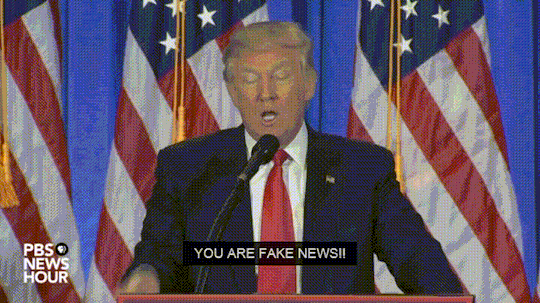
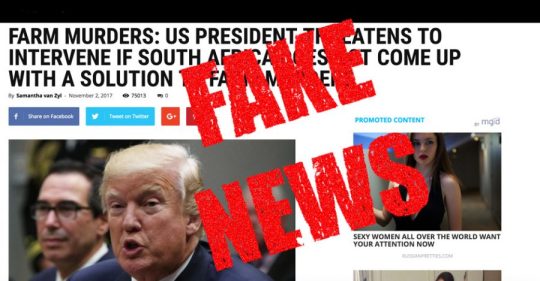
Fake News
Fake news has been popularized in most recent years due to American president, Donald Trump, having used it so often. Trump declares a lot of media that may put him in a negative light as ‘fake news.’ Fake news is the creation of incorrect information that is spread with the ‘intent to deceive’. (Moore, 2016. 4) The reason for this is to ‘generate clicks and revenue’. (Moore, 2016. 4) Fake news is difficult to recognize as well as stop the dissemination and creation of. This is said because it has been happening for years through the mass media with an extensive agenda-setting power meaning that news is fabricated or manipulated to capture the attention of society and to distract them from another issue. Fake news can come in the form of “unintentional false reporting, rumors, conspiracy theories, satire, misleading reports [and] false statements by politicians”. (Allcott & Gentzkow, 2017. 214) Due to this extensive list of possible fake news examples, it makes it even harder to identify.
With the expansion of social media, the creation and dissemination of fake news has been exaggerated especially since the 2016 US election. It is also problematic due to the lack of ‘fact-checking or editorial judgement.’ (Allcott & Gentzkow, 2017. 211) Apart from fake news being unable to define, also brings the difficulty in being aware of it and so it does not influence society’s decisions and behaviors but unfortunately, it does. The repetition of such news can call for the doubtful reaction to all media sources as well as leaning towards society believing the false media.
Along with fake news being the contributor to the spreading of incorrect situations is also the societal power relations at threat in a multicultural South Africa. There is a created identity of ‘us’ and ‘them’ between the white Afrikaner population and other communities. Group-identity theory is the creation of an exclusive circle that excludes any individual that has different identity characteristics which creates an ‘other’. Hall (2001) believes that otherness is created when somebody is different to the self causing confusion and binary oppositions. The Afrikaner population, the apparent victims of this ‘white genocide,' has become a result of fear of losing power within a majority black society. (Calitz, 2014)
In post-apartheid South Africa, there has been a “recurring myth in white public discourse [in] the idea that whites [have] been significant and almost crucial to the development of South Africa”. (Calitz, 2014)
So in a society whereby the majority population was succumb to poor treatment and abuse by the minority population was not crucial to the development of South Africa?

The Red October protest was a political protest to bring ‘white oppression’ to attention. It was controlled by activists and singers, Steve Hofmeyr and Sunnette Bridges. “They demanded that the government must act against 'the inhumane slaughter and oppression of the white South African ethnic minority’”. ( IOL. 2013)
As a white South African, I can clearly say that this is fake news. I AM STILL VERY MUCH ALIVE.

There has been an interpreted “war being waged against whites in the new South Africa and with the help of Red October protest is meant to put an end to it by bringing the issue to global attention.” (Calitz, 2014) This shows the level of entitlement that white people in the country hold over the majority population and cannot handle the idea of a loss of privilege in a country that they ran through structures of racism. Such ideals have come from a sense of “being unwanted in the new South Africa, which creates a fear of not knowing where they belong”. (Calitz, 2014)
This idea of white genocide in South Africa has come along with the white minority losing power after Apartheid and black South Africans being in control, attempting to make the country equal after its horrendous history. Yet, the creation of the white victim has come about.
This extremist ideal has been accelerated through the use of social media to create a moral panic alongside this fake news. Stanley Cohen (2001) says that moral panics occur when a “condition, episode, person or group of people emerges to become defined as a threat to societal values and interests”. In this case, black people are believed to be the threat to the white minority. This disrupts the worldly order of race relations as white people are believed to be more superior than other subordinate groups. This arises from histories of colonial expansion and imperial domination. It is also made to be believable to the white population being a minority which makes them appear to be small and powerless. However, the structures of apartheid still loom over the society.
Through social media, the myth of white genocide spread and caught the attention of US president, Donald Trump.

However, Donald Trump has his own controversial opinions on race so are we really believing him?
This information also got to Australia where their immigration department was said to fast-track white South African visas as they need to “escape” this “genocide”. This caught a lot of attention on Twitter, especially from the shocked South African citizens that knew this information was false. It is simply a conspiracy theory.
Therefore, fake news and incorrect information can be built into something much greater than it is through social media. It can reach a much larger audience and become a “broken telephone” of information. Fake news needs to be taken seriously as this topic isn't something to be taken lightly, it is causing much worldwide moral panic despite being untrue.
READ: https://www.timeslive.co.za/news/south-africa/2018-03-16-australia-insists-refugee-programme-non-discriminatory-as-sa-outrage-mounts/
WATCH: https://www.news24.com/Analysis/watch-the-far-rights-myth-of-south-african-white-genocide-20180907

Sources:
Allcott, H., & Gentzkow, M. (2017). ‘Social Media and Fake News in the 2016 Election’. Journal of Economic Perspectives. 31.2, pp. 211-236.
Calitz, W. (2014). Rhetoric in the Red October Campaign: Exploring the white victim identity of post-apartheid South Africa. MSc dissertation, University of Oregon, p.p. 51-59.
Cohen, S. (2011). Folk Devils and Moral Panics. London: Routledge.
Hall, S., 2001. The Spectacle of the Other. Discourse theory and practice: A reader, pp. 324 - 344.
IOL.CO.ZA. (2013) Red October protests white ‘oppression’. Retrieved from: https://www.iol.co.za/news/politics/red-october-protests-white-oppression-1590352
Moore, M.M. (2017). ‘Submission to: Inquiry into Fake News Culture, Media and Sport Select Committee’. Centre for the Study of the Media, Communication and Power. London: Kings College.
Wambugu, J. (2005). ‘When tables turn: Discursive constructions of whites as victims of affirmative action in a post-apartheid South Africa.’ Psychology in Society 31, p.p 57-70
0 notes
Text
Has social media worsened the Beyhive?
GET INTO FORMATION ELSE I COULD MAKE YOUR LIFE VERY HORRIBLE
NOBODY HAS THE CHANCE TO ACTUALLY CRITICISE BEYONCE WITHOUT BEING STUNG BY THE WHOLE BEYHIVE.

Technology and new media has led to a new public sphere that rejects space and time completely. (Guschwan, 2015) It allows people from all across the world to interact and communicate via these platforms about any interests, criticisms or similarities. This shows that fandom and the connecting of communities has become that much more effective. This post will discuss how fandom has become a toxic phenomenon in itself through social media, specifically looking at the Beyhive i.e Beyonce fans. With the help of excessive love and obsession for the Queen, trolling, the representation of Beyonce in the greater scheme of things and her intimate connection with the Hive through social media, the Beyhive has become the fandom that is not to be messed with.
A fan is an “enthusiastic devotee usually as a spectator” or “an ardent admirer or enthusiast” according to the Merriam-Webster dictionary. (https://www.merriam-webster.com/dictionary/fan ) This term arises from the word “fanatic” which has negative stereotypes associated with it such as crazy or obsessed. (Jenkins, 1992) Jenkins refers to fans as “frighteningly out of control, undisciplined and unrepentant, rogue readers” of texts. (Jenkins, 1992) Social media seems to have worsened the passion of the fandom to the extent that these super fans would harass and troll others in order to defend their ‘queen.’

Every member of the Beyhive is a worker Bee that is submissive to their Highness and whose job it is to sing the praises of Beyonce. A little excessive for somebody that you do not know personally? Apparently not.

The use of social media allows for an “ordinary” individual to have an idealized relationship with their role model as it appears as if the relationship is more personal through such platforms.
With the expansion of social media, groups of fans can come together due to a common interest that allow for them to relate to one another and feel equal within this community. (Ted Talk, 2010) This gives fans a sense of belonging as if they have become a vital component of society (Jenkins III, 1988) This sense of belonging is why they “construct their own cultures and subcultures from popular culture” such as Beyonce fans have created a community celebrating the ‘Queen Bee’ herself. (Jenkins III, 1988)

Trolling due to toxic fandom
Online trolling is the term used when somebody brings criticism, ridicule and negativity to a specific piece of text online. “Trolling is the deliberate (perceived) use of impoliteness/ aggression, deception and/ or manipulation in CMC to create a context conducive to triggering or antagonizing conflict, typically for amusement’s sake.” (Hardaker, 2013. P79) This notion of trolling is created from the idea of us versus them. If they are not a part of our community, then we must either bring them in or slash them because they do not belong or understand. This social identity theory of psychology is that there is an in-group favouritism, meaning that one will be negative towards the out-group. Therefore, one will criticize and swarm any member of the “out-group”. (Lonsdale, North. 2009) The problem with online fan communities and the ability to access and involve oneself at any time brings about a greater platform for trolling. Fan culture brings forth continuous ridiculing and other negative forms of representation, especially if another is not part of such a fan community. (Gray et al, 2017) This ridicule is often associated along the lines of “gender, ethnicity, class and age” as that is what the media form represents. (Gray et al, 2017) When any member of society is to “diss” or criticize Beyonce, the Beyhive gets into formation and spams any online account with Bee emojis.

Some motives behind online trolling include: “Malevolence or deviant impulses, enjoyment, activism or ideology, social status negotiations, psychological factors and technological motivations” (Fichman et al, 2016)
Also, by engaging in such discussions causes the inexperienced or naïve users/ outcasts of the community from posting non-controversial and clearly opinionated messages. (Fichman et al, 2016)
Why is the Beyhive’s pride so massive?
https://www.youtube.com/watch?v=gM89Q5Eng_M&list=PLHFeMk_LSwG4BGn8F5MlOZWYyLWzLCvSe
Historically, black women in particular have been made to appear lesser than their white counterparts. They deal with double standards, discrimination and stereotypes. Therefore, Desiree Jackson (2016) explains black feminism as in the:
“Present day there is still a need to “protect Black women and girls from the constant waves of oppression, discrimination, and prevalence of destructive images of Black womanhood.” Black feminism is a combination of third wave feminism and pride in blackness; it represents ownership in one’s body, equality sexually, socially, and economically while simultaneously being prideful and representing black culture.”

There is a strong feminist discourse as well as race discourse associated with this fandom which makes it even more powerful. This power may even be of a toxic nature whereby anything that is not in favor of Beyonce, harassment and trolling will take place. The concept of black feminist discourse within the Beyhive exaggerates the strength and power that Beyonce holds within the society; that has the odds stacked against her. As a black woman in a white, male dominated society, her success and strength means all that more. She is also the face of black female power, so especially for those that can relate within the community, they will defend her even more. The evolution of black feminism and the Beyhive at the front of it, has created somewhat of a toxic fandom as social media has no control over the trolling that happens in the name of “passion”, “love” and “protection” of Beyoncé and the ideologies that she represents. It creates a sense of empowerment through community. (Collins, 2015) The album Lemonade also brings female sexuality into the light of mainstream culture. It is seen to be normal for boys to express their sexuality and not women, therefore Beyonce gives us music from the “oppositional gaze” which takes a lot of strength in this dominated white male society. That is what makes her more of a queen. (Jackson, 2016)
“The entirety of the album has a dual purpose to own your blackness confidently as a black individual and to own your femininity as a woman.” – Desiree Jackson (2016)


Beyhive attack
When coming to the artist’s defense, the Beyhive does not go lightly. They swarm in and attack anybody that proves to be a threat of sorts to Queen Bey. This was seen when Beyoncé dropped her Lemonade album in 2015. In her track, “Sorry”, Beyoncé mentions “Becky with the good hair” which follows Jay-Z’s cheating rumors. The Beyhive attacked fashion designer, Rachel Roy, who was suspected to be the girl that Jay-Z cheated with. This information was never confirmed but the Beyhive made it their mission to find out who this “Becky” was after suspecting several other artists including Rita Ora. Roy’s Instagram account was overtaken with bee emoji’s to signify the Beyhive’s virtual attack on her. Some members went as far as mocking Roy’s children. Some say that this toxicity of the fandom shows how the internet has allowed for such obsession to go too far.



The power of the Beyhive...
Beyonce’s intimate connection with the Hive
The online world provides copious amounts of information for these followers which can then be created into new material or leverage to get closer to the star. (Guschwan, 2015) This interaction between the fans and the star is made possible through social media. On Beyonce’s 37th birthday, she wrote a heartfelt letter to the Beyhive thanking them for their support. She finished her Instagram posts with “I love you, Hive. B.” (@beyonce) This personal connection exaggerates the companionship between fandom and the star and therefore, could cause further obsession and toxicity.
Therefore, one can say that with the effectiveness and accessibility that is made available through social media platforms, fandoms can become that much stronger and more dominant. They can even become toxic. Social media defies any time or space barriers and so there is always a platform for the Beyhive to congregate towards a common cause. Whether this cause be defending Bey against haters or anybody that threatens Beyonce’s power and status in society. There is never escaping the Beyhive, they will sting you if you are not a worker Bee.


After I say that Beyonce is losing her touch and suddenly I have no friends:

Other news:
http://www.stuff.co.nz/stuff-nation/assignments/share-your-news-and-views/14628356/Obsessive-fandoms-frightening-result-of-intense-celebrity-culture-we-live-in
https://www.eonline.com/news/866060/the-fiery-side-of-celebrity-fandom-why-the-beyhive-and-little-monsters-really-attack
https://beardedgentlemenmusic.com/2018/07/06/toxic-fandom-cult-of-identity/

Sources:
Fichman, P., & Sanfilippo, M. R. (2016). Online trolling and its perpetrators: Under the cyberbridge. Rowman & Littlefield.
Gray, J., Sandvoss, C., & Harrington, C. L. (Eds.). (2017). Fandom: Identities and communities in a mediated world. NYU Press.
Jackson, D. (November 3, 2016). Beyoncé, BEYONCÉ, Lemonade: Symbols of Black Feminism. Medium. Retrieved from: https://medium.com/@Destinee_Jackson/beyoncé-beyoncé-lemonade-symbols-of-black-feminism-a4dc4b4d97eb
Jenkins, Henry (1992). ‘“Get a life!”:Fans, Poachers, Nomads’.Textual Poachers: Television Fans and Participatory Culture. New York & London: Routledge
Jenkins III, H, (1988). Star Trek rerun, reread, rewritten: Fan writing as textual poaching. Critical Studies in Mass Communication, Volume 5, Issue 2, 85-107.
Lonsdale, A, and North , A (2009). Musical Taste and Ingroup Favouritism. Group Processes & Intergroup Relations, Vol 12, Issue 3, 319 - 327. http://0-journals.sagepub.com.innopac.wits.ac.za/doi/pdf/10.1177/1368430209102842
Online Dictioary: Merriam Webster - “Fan” https://www.merriam-webster.com/dictionary/fan [Accessed: 07 September 2018)
Stanfill, Mel (2013). ‘“They’re Losers, but I Know Better”: Intra-Fandom Stereotyping and the Normalisation of the Fan Subject.’ Critical Studies in Media Communication. 30. Issue 2. (http://0-www.tandfonline.com.innopac.wits.ac.za/doi/full/10.1080/15295036.2012.755053)
Tedx Talks. (2010). TEDxNYED - Henry Jenkins - 03/06/10. [Online Video]. 13 April 2010. Available from: https://www.youtube.com/watch?v=AFCLKa0XRlw&t=171s. [Accessed: 07 September 2018].
December 2013, Social Media and Fandom. Modern Fandom – a counter culture becomes a culture. Retrieved from: https://sih17.wordpress.com
0 notes
Text
LET’S TAKE A SELFIE!
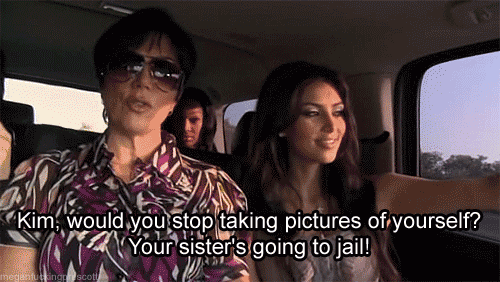
With the emergence of the internet, life seems to be busier, more connected and more efficient. However, with such characteristics in our world — one needs to create a sense of meaning in one’s life and self. So why not take a selfie, right? One can create meaning and demand a presence on social media through the use of the selfie. There is more competition in the world as our time and space boundaries are no longer affected. By demanding a presence on social media, one must reiterate the ideal of beauty (according to society and media, of course) and be successful. By doing this, one can receive a copious amount of attention in this connected world and be more like celebrities — we can reach Instafame and micro celebrity status quickly.
Kim Kardashian, one of the most influential celebrities in the social media world, has an entire book of selfies. Us human beings actually bought that book. Kardashian has a net-worth of R5.1billion according to Forbes, yet she still gave us a book of selfies? (Robehmed, 2018) The selfie era has made her into a billionaire so what does that say about the ‘attention economy’ in which we live? (Marwick, 2015. 138) Is she using selfies to inspire the ordinary? Is it used for instafame? Is it to create a new standard of beauty through self-expressionist photography? Is it just her narcissism? The book itself is called Selfish, so let’s talk all things selfie.

The selfie is “an image of oneself taken with a smartphone or webcam, which communicates some kind of message about the self and which is shared through digital platforms.” (Iqani, 2016) Selfies allow for “ordinary people to make visual statements about themselves.” (Iqani, 2016) There is an association between selfie-taking, narcissism and self-esteem.
Society’s perception of beauty and its effect on our self-esteem: With the spread of photo-editing apps and the process of taking 75 selfies before only posting 1, shows a “level of physical ‘perfection’ previously seen only on celebrity or beauty magazines” which is now seen constantly on social media. (Boston Medical Center, 2018) Filtered selfies deviate one further away from society, however, these photos resemble a mirror of the self and of society. (Iqani, 2016) This is said because the media determines what is deemed to be ‘beautiful’ or ‘successful’ and so the ordinary human tries to achieve that standard of beauty. This proves to be problematic as beauty is classified through age, race, hair type, weight, sexualised body parts and any other aesthetic to the human eye. Such standards of beauty portray a dominant ideology of a more ‘superior’ look and the ideal. This is problematic as now the self-worth, especially of young females engaging with social media, see this common standard and want to achieve it which affects the self-esteem negatively if not achieved. Therefore, such perceptions can change a person’s “self esteem and trigger body dysmorphic disorder [BDD].” (Boston Medical Center, 2018) This means that one believes that there is a “ perceived flaw in appearance.” (Boston Medical Center, 2018) Hence, specific angles and filters added to photos make one look more desirable and continue to strive for Instafame. (Marwick, 2015)
However, when attempting to boost self-esteem, narcissism is boosted too. This is problematic. (Stein, 2013) This is said because when the world does not affirm us when broadcasting our boost in self-esteem then we will be disappointed. Therefore, one again our expectations are being raised and may result in disappointment.

Narcissism Selfies are also a form of showing a narcissistic personality disorder. It is said that people in their 20s (millennials) suffer from narcissistic personality disorder three times as high as people in the generation that is now 65 or older. (Stein, 2013) According to the Oxford dictionary, narcissism is when a person has “an excessive interest in or admiration of themselves.” (https://en.oxforddictionaries.com/definition/narcissist) One could argue that this is just confidence but there is a fine line between narcissism and confidence. Confidence is the happiness and contentment with oneself whereas narcissists really ‘feel themselves’, as Nicki Minaj and Beyonce would say.
https://www.youtube.com/watch?v=5sqpL0eXxxE
One creates a profile of themselves in order to market and self-promote themselves as a brand on social media, especially Instagram. Users of Instagram with several more selfies display themselves are narcissists that believe they are “more physically attractive.” (Moon et al., 2016) Confidence, positivity and narcissism sells best, so why show any other side of you.
Stein (2013) explains that millennials thrive off watching reality-tv shows which are tv programs based on narcissists. Therefore, when watching Keeping Up with the Kardashians we also want to be like Kim and be “confident” and take a selfie — it'll make us look more successful right?
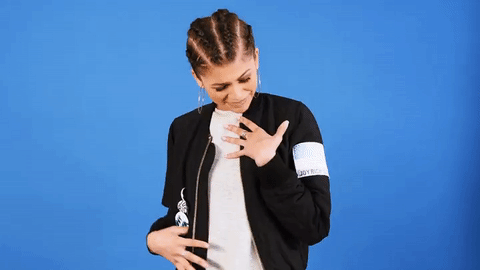
Empowering However, selfies aren't all bad. One may see them as narcissistic but rather I partially see them as liberating and empowering. It is taking oneself as an ordinary individual and being able to highlight the areas that you really like of yourself. If your personality is your best part, maybe they aren't so empowering…

But they give individuals a chance to show the world what they think is beautiful within themselves. Contrary to this though, if minimal interactions and affirmation with the photos emerge or result in some form of trolling or negativity, the self-esteem and mental health of an individual could be damaged even further than what the mainstream media causes.
Creation of online identities in order to achieve a micro-celebrity status Despite these negative affects of selfies, the phenomenon has taken over the world. Due to the world being most influential online, selfies play an even greater role in the development of the self, the exposure of the self and there is a possibility of fame. This fame creates the ‘micro celebrity’ status. According to Alice Marwick (2015.138), “Micro-celebrity is a mind-set and a collection of self-presentation practices endemic in social media, in which users strategically formulate a profile, reach out to followers, and reveal personal information to increase attention and thus improve their online status.” Millennials are believed to be “fame-obsessed”. (Stein, 2013)
Selfies are all about making the private become public and the ordinary become spectacular. (Iqani, 2016. 413) This millennial generation value their personal worth on Instagram likes, Facebook likes, mentions and comments all from people through a screen. Therefore, when posting a selfie, it is not encouraged to put one of you having just woken up with bed head, dirty teeth, puffy eyes and in pyjamas. Rather post a selfie that you took when getting ready to go on a date where you are dressed to impress. Again, the standards of beauty affect this idea behind making your private life public. Also, the latter will be the photo you receive more affirmations on especially if it’s been edited. This may be a diversion of reality as the whole truth is not being told. This is because the internet is a “visual medium” (Marwick, 2015. 138). Nobody is caring of one’s personality but rather only after the aesthetic. This superficial world in which we are living is deeming the ordinary to be spectacular and then places more value on some individuals more than others.
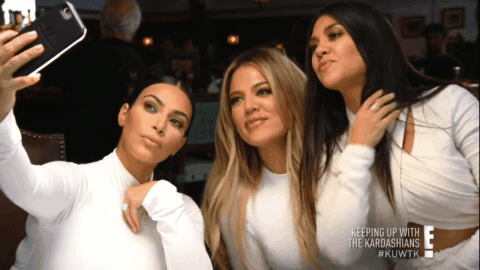
Approximately 1,000 selfies are posted every 10 seconds on Instagram and around 19 of every 20 teenagers has taken a selfie. (Cohen, 2016) These rough numbers tell you how great this phenomenan is and how it will continue to grow as the “documentation of the self [is] for the consumption of others.” (Marwick, 2015. 141) The reach for instafame and success is dominating the selfie experiences, narcissism increases and beauty standards get even harder to match. Everybody is beautiful, but the more edited and more perfect selfie will attract more attention. This is the sad reality of selfie-taking and internet sharing. Although selfie-taking isn't necessarily needed to be stopped, these effects need to be addressed.
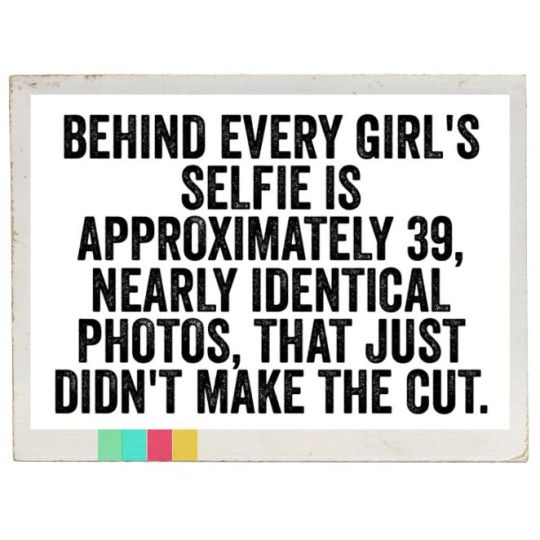
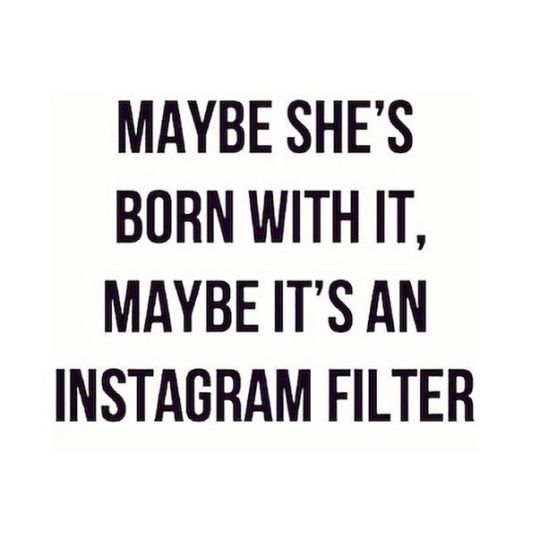
There is even a step-to-step guide on how to portray the ‘perfect’ . Watch Lizza explain how to take a perfect selfie:
https://www.youtube.com/watch?v=aQaTgWzo-e4

Sources: Boston Medical Center. (2018). A new reality for beauty standards: How selfies and filters affect body image. In Science Daily. Retrieved from: https://www.sciencedaily.com/releases/2018/08/180802141601.html
Coleman, O. [Ossana Coleman]. (May, 22. 2015). Nicki Minaj ft. Beyonce - Feeling Myself (Lyrics). [Video file] Retrieved from: https://www.youtube.com/watch?v=5sqpL0eXxxE
Iqani, M. & Schroeder, J.E. (2016) ‘#Selfie: digital self-portraits as commodity form and consumption practice.’ Consumption Markets & Culture. 19.5, pp. 405-415.
Koshy, L. [Lizza Koshy] (Aug, 26. 2015). HOW TO TAKE THE PERFECT SELFIE 101 | Lizzza. [Video File] Retrieved from: https://www.youtube.com/watch?v=aQaTgWzo-e4
Marwick, A.E. (2015). ‘Instafame: Luxury Selfies in the Attention Economy’. Public Culture. 27.1, pp.137 - 160.
Moon, J. H., Lee, E., Lee, J. A., Choi, T. R., & Sung, Y. (2016). The role of narcissism in self-promotion on Instagram. Personality and Individual Differences, 101, 22-25.
Oxford Dictionary. Narcissist. Retrieved from: (https://en.oxforddictionaries.com/definition/narcissist)
Robhemed, N. (2018). Kim Kardashian-West is Worth 350 Million. Forbes Magazine. Retrieved from: https://www.forbes.com/sites/natalierobehmed/2018/07/11/why-kim-kardashian-west-is-worth-350-million/#497d6e8b4f7b
Stein, J. (2013) The Me Me Me Generation. Time Magazine. Retrieved on: http://time.com/247/millennials-the-me-me-me-generation/
0 notes
Text
Information access = power
“The information revolution has further empowered individuals by handing them the technology to compete against huge organizations: hackers vs. corporations, bloggers vs. newspapers, terrorists vs. nation-states, YouTube directors vs. studios, app-makers vs. entire industries. Millennials don't need us. That's why we're scared of them.”
Joel Stein
http://time.com/247/millennials-the-me-me-me-generation/

0 notes
